By SUE COLETTA
Another brave writer submitted their first page for critique. I’ll catch ya on the flipside. Enjoy!
TITLE: Sonbgird
chapter 1
I stood alone, ready to jump. A slow wavering breath parted my lips. I gripped the sides of the worn concrete tunnel and looked over the edge. The wind blasted my hair up the side of the building, and rumbled in my ears.
I could do this. Just have to push through the fear. My eyes stung, but I kept the tears from erupting.
The sunshine bounced off the pitted white walls of the building. Below me, the slow curve of it swept far away. The bottom lost somewhere in the sand below. Above me, it changed into a skyscraper. The top disappeared in the clouds. I looked over the landscape of buildings in the distance as far as I could see. So many lives held in each one, but all of them like mine. Concrete volcanoes ready to erupt.
Do it. Do it now.
I screamed at myself to move, but my feet wouldn’t budge. I could feel the rush of panic flushing over me. Tingling my fingertips as sweat prickled my forehead.
Even if I didn’t believe I could, I had to try.
I closed my eyes.
I didn’t want the responsibility. It wasn’t fair.
I backed up to get a running start, sliding my feet along the safety of the concert. My fingertips and toes zinged with pin pricks, and I was sure I would pass out. But I let my instinct take over.
I ran.
The wind slipped over the sweat starting to flush my skin, and I felt every nerve on fire. The dark, round tunnel lead me faster and faster to the end. My toes curled around the lip of the tunnel as I pushed off the edge.
I jumped.
The sunlight and wind rushed over my body, and I was free of the Block. But I didn’t fall. I ignited.
***
Almost a year earlier, I stood in the Comb’s Diner, going through the dull stammer of the only life I knew.
I cleaned and stocked all the tables for the waiter, Dan, in exchange for scraps left over from breakfast. He complained plenty about it. “Do you work here or at the Capitol?” His burly and gruff nature matched his stature.
Amelia was the owner and cook.
That day, her bight brown eyes found me from behind the cook’s window. Something was up, but I didn’t know what. Looking back, I should have realized.
She flipped her long chocolate hair over her shoulder. It draped down her back in a loose braid she had to redo several times a day.
She handed me a few coins. “That’s enough to get you to work and back before it starts raining.”
The genre would be fantasy, I think. Full disclosure: this is not my preferred genre. As a reader, I’m drawn to stories that are logical or at least possible (think: The Martian by Andy Weirs). Brave writer, please remember this is one reader’s opinions. Perhaps others will see something I missed.
Let’s look at this opener in more depth. My comments are in bold.
TITLE: Sonbgird I’m guessing this is a typo and you meant to write Songbird, which I liked right away.
Chapter 1
I stood alone, ready to jump. A slow wavering breath parted my lips. (first two lines drew me in—good job) I gripped the sides of the worn concrete tunnel and looked over the edge. The wind blasted my hair up the side of the building, and rumbled in my ears.
The previous two sentences I’ve read a gazillion times and I still can’t picture where I am. Is the MC standing in an empty culvert? If so, then how does wind blow his/her hair “up the side of the building”?
I could do this. Just have to push through the fear. My eyes stung, but I kept the tears from erupting.
The Sunshine bounced off the pitted white walls of the building (excellent visual). Below me, the slow curve of it (of what, the walls or tunnel? In my mind a tunnel is horizontal, not vertical. If it is a vertical structure and s/he’s looking down into a tunnel-like pit, then you need a better way to set the scene. Also, whenever possible substitute the word “it” for the object) swept far away. The bottom lost somewhere in the sand below.
“Sand” threw me. I’d assumed we were in a metropolitan area due to the word “tunnel,” so you need to ground the reader to where we are.
Above me, it changed into a skyscraper.
Again, what is “it”? And how did it morph into a skyscraper? Without some context, these details don’t make sense to this reader.
The top disappeared in the clouds. I looked over the landscape of buildings in the distance as far as I could see.
That passage reaffirms a metropolitan landscape in my mind. Unless we’re in the desert outside Vegas or somewhere similar. See why it’s important to ground the reader? Don’t make us guess. If we can’t envision the surroundings, how can we fully invest in the story?.
So many lives held in each one, but all of them like mine. Concrete volcanoes ready to erupt. Those two lines intrigued me. I’m thinking concrete smokestacks. Try adding more sensory details i.e. smoke plumed into an aqua-blue sky, tangoed with a lone cloud, and filled my sinuses with burnt ashes of sulfur (or somebody’s dearly departed — kidding. 😉 )
Do it. Do it now. Nice. I can feel the urgency.
I screamed at myself for my feet to move, but they wouldn’t comply my feet wouldn’t budge. I could feel the rush of panic flushing over me. (try to decrease the sentences that begin with “I” while remaining in a deep POV). A cold rush of panic washed over me, tingling my fingertips, as sweat prickling my forehead (changed to show how to play with rhythm to create a more visceral experience. Just a suggestion. Your call on whether to keep it).
Even if I didn’t believe I could (could what? You’re trying too hard to be mysterious), I had to try.
I closed my eyes.
I didn’t want the responsibility. It wasn’t fair. This I like. It’s mysterious yet, as a reader, I don’t feel cheated—nicely done.
I backed up to get a running start, sliding my feet along the safety of the concert. My fingertips and toes zinged with pin pricks, and I was sure I would pass out (good visuals here). But I let my instinct take over.
I ran.
The wind slipped over the sweat starting to flush my skin, and I felt every nerve was on fire (removed “I felt” to stay in deep POV). The dark, round tunnel lead me faster and faster to the end. My toes curled around the lip of the tunnel as I pushed off the edge.
I still say the MC is in a horizontal culvert that’s hanging over a cliff of some sort. Regardless, please make it clear where we’re at. I shouldn’t still be guessing.
I jumped.
The sunlight and wind rushed over my body, and I was free of the Block. But I didn’t fall. I ignited. Whoa. The MC burst into flames?
I red-highlighted all the sentences that begin with “I” to make you aware of them. If this is intentional, and it may be, then fine, but be careful of overdoing it. Too many in a row can work against us.
***
Almost a year earlier, I stood in the Comb’s Diner, going through the dull stammer of the only life I knew.
I cleaned and stocked all the tables for the waiter, Dan, in exchange for scraps left over from breakfast (this is a great way to weave in a tidbit of backstory). He complained plenty about it. “Do you work here or at the Capitol?” His burly and gruff nature matched his stature.
Amelia was the owner and cook.
That day, her bright brown eyes found me from behind the cook’s window. This is a nit: whenever I read “eyes” instead of “gaze” in this context I think of disembodied eyeballs. Something was up, but I didn’t know what. Looking back, I should have realized.
She flipped her long chocolate-colored (added “-colored” so the reader doesn’t imagine real chocolate like I did on the first read-through. Some descriptive words are like that. Or choose a different way to describe the color i.e. deep brown) hair over her shoulder. It (Strands instead of “it”) draped down her back in a loose braid she had to redo several times a day.
The first line indicates she has long flowing hair, then we find out she’s wearing a braid. Give us one solid image. When we’re not clear right away it causes confusion.
She handed me a few coins. “That’s enough to get you to work and back before it starts raining.”
Thank you, Brave Writer, for submitting your work to TKZ. It’s been a pleasure critiquing this first page. I hope you found it useful.
Over to you, my beloved TKZers! Please add helpful suggestions for this brave writer.


 Describe your very first story in a sentence or two and tell us the genre.
Describe your very first story in a sentence or two and tell us the genre.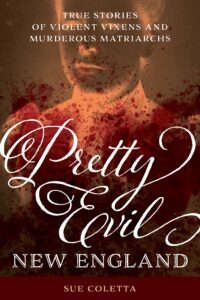
 If a prisoner survives multiple trips to the gallows, should he be set free?
If a prisoner survives multiple trips to the gallows, should he be set free?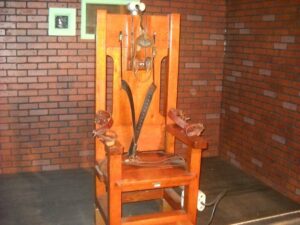 A little digging led me to an English criminal named Joseph Samuels. In 1801, a jury convicted Samuels of robbery at the tender age of 15 years old and shipped him to Australia, to serve his time at a penal colony in Sydney Cove.
A little digging led me to an English criminal named Joseph Samuels. In 1801, a jury convicted Samuels of robbery at the tender age of 15 years old and shipped him to Australia, to serve his time at a penal colony in Sydney Cove. Writers wear many hats… wife/husband, mother/father, sister/brother, friend, marketer, editor, (some add) publisher, (some add) cover designer, (some add) audiobook narrator, (some add) speaker, (some add) coach, housekeeper, bookkeeper, blogger, social media user/expert, tax preparer, holiday host, baker, cook, etc., etc., etc.
Writers wear many hats… wife/husband, mother/father, sister/brother, friend, marketer, editor, (some add) publisher, (some add) cover designer, (some add) audiobook narrator, (some add) speaker, (some add) coach, housekeeper, bookkeeper, blogger, social media user/expert, tax preparer, holiday host, baker, cook, etc., etc., etc.
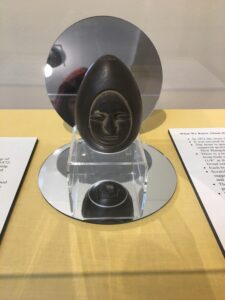
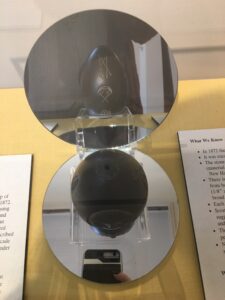
 What’s the best writerly gift you’ve ever received? Why was it so helpful?
What’s the best writerly gift you’ve ever received? Why was it so helpful?
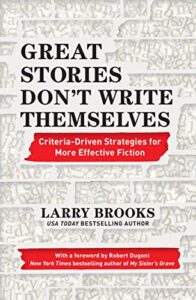 “Larry Brooks has done it again!!! In Great Stories Don’t Write Themselves, Brooks delivers a clear, concise, easily digestible roadmap to make our stories work.
“Larry Brooks has done it again!!! In Great Stories Don’t Write Themselves, Brooks delivers a clear, concise, easily digestible roadmap to make our stories work. We haven’t asked this question in a while.
We haven’t asked this question in a while.